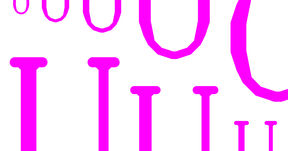Interview with Refashioning the Renaissance Team

What are the potentials and difficulties of art and science collaborations, and working across and beyond disciplines?
Sophie: In the sixteenth- and seventeenth centuries, art and science intersected in the creative works of skilled artisans, who explored nature and pushed materials to their limits in order to understand the world as much as to create beautiful things. One difficulty we have in studying the artistic creations of the past nowadays is that in order to fully appreciate artisanal achievements, we need to break down the contemporary conceptual divisions between art and science disciplines to reopen dialogues. When as historians we are able to enter scientific laboratories and art studios to experiment with historic materials, and can discuss findings with scientists and makers, we have the potential to recover information about that past that is not contained in texts and archives, but instead resides in objects.
Have you ever experienced any conflict with the scientific laboratory protocols and/or health and safety policies of the institutions you have collaborated with? Has it required any change in the direction of the research or at the initial plan? How do you usually negotiate with the possible restraints or limitations which might apply in such circumstances?
Sophie: Science lab safety is paramount, but I have discovered through teaching and researching in labs with art historians and historians that discussions of safety, PPE, and fire extinguishers often intimidate people and make them anxious to experiment. Many people haven’t stepped foot in a science lab since they were schoolchildren, and so as adult scholars or makers, the first challenge we encounter is how to build confidence in the space. But without these safety measures in place, it wouldn’t be possible to experience some of the material transformations that change our understanding of historical practices - now we know how dangerous lead is, for example. I have seen first hand how after a few days of working in labs, graduate students and scholars soon relax and feel empowered to work with materials in safe and creative ways.
Based on your own experience, what kind of long-term transformations might be needed at the infrastructural level to support and encourage trans-, post-, para-disciplinarity in art&science or biological art/ bio-design practices in a more sustainable way?
Sophie:We need funding in place that supports the kinds of costs that are expected in the sciences but are above the scales usually awarded in the arts. We also need to break down narratives suggesting that science and art are opposite ends of the academic spectrum, to show how hands-on making and creative experiment is at the heart of both endeavors.
What kind of challenges and limitations could migrating to the digital realm in these pandemic bring to the field of art & science, the bioart or biodesign works which are heavily dependent on materiality and the biological matter, living organisms...etc?
Sophie:Hands-on experience and tacit knowledge is at the heart of artistic and scientific investigation, and while the digital realm offers new opportunities for research and dissemination of findings, we still need direct physical engagement with materials for our work. In the Refashioning project, material and digital reconstructions are mutually beneficial, our findings in one area support and further research in the other.
Following the previous question, what could have been lost and/or gained during this migration?
Sophie: We were lucky to be able to be in the Biofilia lab the week before Coronavirus lockdowns really hit Finland, the UK, the Netherlands, and the USA. Our team and guest researchers all returned to their homes straight from the lab, and this workshop sustained our research and engagement in the first months of the pandemic.
What kind of changes or challenges (conceptual, ethical, and practical) could be expected in the field of biological arts and art & science in relation to the paradigm shift coronavirus pandemic have brought to (life) sciences?
Sophie:I hope we will be able to work together in labs and studios again soon, because some of our greatest discussions and findings come from standing over a dyebath, weighing materials, or sampling varnishes together. We have worked remotely and remained in contact; I hope that after this pandemic we can continue to keep international dialogues and online discussions open, and be more patient with ourselves.
What alliances can be found within the context of life, death, care, non/living actants, pandemic crisis and justice?
Sophie:The renaissance was a time of plague pandemics, and it is easy to forget that many of the people that we study in the Refashioning project were living through times of quarantines, sickness, and fear. While our experience of the coronavirus pandemic is very far from the effects of bubonic plagues in the early modern era, living through this time of crisis has made me more sensitive to the experiences of those we study.
Have there been any particular influences of Covid-19 restrictions & reactions to your artistic/design research and your collaboration with other practitioners/institutions?
Sophie:Our research has had to slow down, as some of our collaborators have not been able to access their looms and workshops. But we are trying to find new solutions, and are fortunate that we can be flexible and adapt our work to the current restrictions.
How has the Covid-19 changed the form and format of art&science collaborations and research networking activities?
Sophie: We have been limited in our ability to access libraries and have had to postpone the Refashioning exhibition and conference until next year. Nevertheless, it has given us more time to think and encouraged new ways to connect, and confirmed the value of making, collaboration, and research.
What would creativity mean to you, could you please describe in three words?
Sophie: experimentation, remaking, iteration






